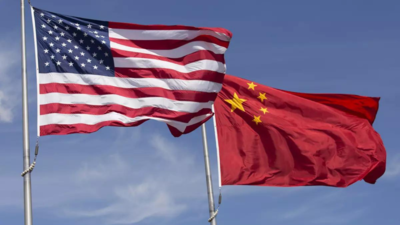
The Ongoing Semiconductor Standoff: A Glimpse into the Future
The semiconductor industry, a linchpin of modern technology, is increasingly becoming a battlefield between the United States and China. The recent comments by Peter Wennink, the former CEO of ASML, Europe’s largest technology firm, offer a stark warning about the future trajectory of this conflict. If you’re as invested in technology as I am, you won’t want to ignore his insights into what lies ahead for the chip sector.
 Global semiconductor manufacturing is at risk due to political tensions.
Global semiconductor manufacturing is at risk due to political tensions.
An Ideological Conflict
In his reflections, Wennink underscores the ideological underpinnings of the U.S.-China chip war. He argues that discussions are driven more by political beliefs than by factual realities. “These kind of discussions are not being conducted on the basis of facts or content or numbers or data but on the basis of ideology,” he stated pointedly. This observation raises an essential question: how can businesses navigate a landscape where facts take a backseat to ideological posturing?
The ramifications of such ideological entanglement are grave. As tension mounts in the semiconductor sector, the industry finds itself ensnared in a complex web of regulatory challenges and nationalistic agendas. If we hope for a balanced technological future, it is imperative that decisions made are grounded in reality rather than rhetoric.
The Stakes for ASML
Under Wennink’s leadership, ASML has become a crucial player in the global semiconductor supply chain. However, with the rise of restrictions on exporting advanced chip-making equipment to China, ASML faces a tightrope walk. China is not just another market; it stands as the company’s second-largest customer. The challenge of maintaining this vital relationship amidst growing geopolitical conflict is no small feat.
Wennink’s tenure saw him lobbying against tight export restrictions and confronting IP issues head-on with Chinese officials.
“I think in Washington, maybe they sometimes thought, that Mr. Wennink, maybe he’s a friend of China. No. I’m a friend to my customers, to my suppliers, to my employees, to my shareholders.”
This statement encapsulates the dilemma many Western companies face today: balancing business interests with national security considerations. It resonates with me as I consider how companies must adapt to the shifting sands of international relations. It reminds me of a time when I, too, had to weigh competing interests in my own professional journey.

Long-Term Implications
Looking to the future, Wennink predicts an extended period of tension and uncertainty in the semiconductor industry. “This is going to go on for a while,” he concluded. The stakes have never been higher, and the potential for long-lasting repercussions cannot be overstated. The semiconductor market, estimated at over $500 billion, could be profoundly reshaped as geopolitical factors influence production and innovation.
This tension leads me to think about the broader impact on technological advancement. Will we see a slowdown in innovation as companies weigh their moves against the backdrop of national security? Or could this divide spur an unexpected acceleration in tech development as nations strive for self-sufficiency?
As someone who has witnessed firsthand the intertwining of technology and politics, I can assure you that these dynamics will shape our digital future in profound ways. The ripple effects could impact everything from the smartphones in our pockets to the autonomous vehicles of tomorrow.
Conclusion
The ongoing U.S.-China chip war serves as a cautionary tale for stakeholders across the globe. With crucial figures like Peter Wennink sounding the alarm, it’s time for businesses to adapt to a rapidly changing environment founded on ideological divisions. We must collectively hope for a resolution that prioritizes facts over ideology, enabling technological progress without sacrificing global collaboration.
As the dust settles, the question remains: how will the semiconductor industry adjust to these challenges, and what can we learn from this ongoing saga? The journey ahead promises to be complex and full of surprises.
In this ever-developing narrative, one thing is clear: the world of technology is not just shaped by innovation but is significantly influenced by the geopolitical landscape. Only time will reveal the full impact of these tensions on our interconnected future.














